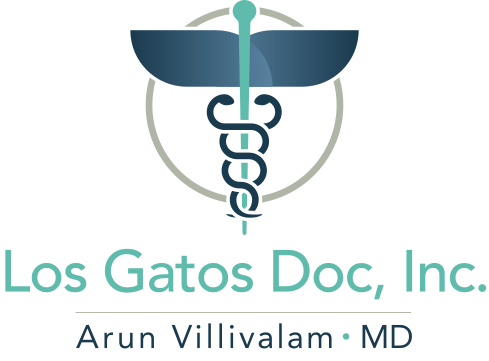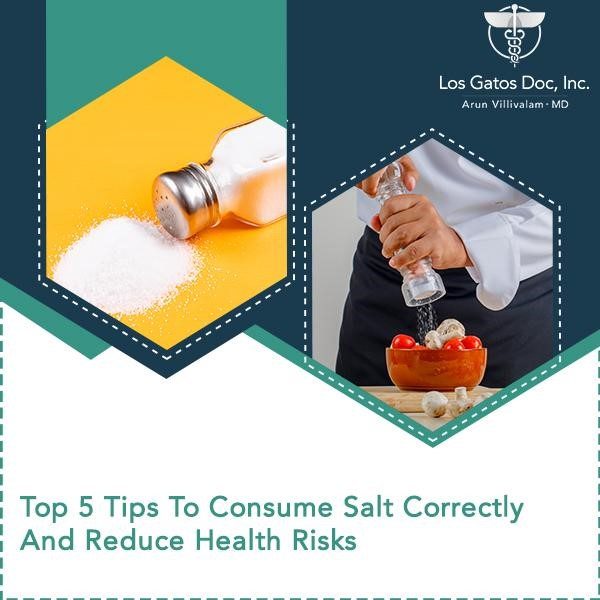Salt is a misunderstood food ingredient. We’re often told to stay away from salt as it’s bad for our health.
But salt is essential for our bodies as it has its health benefits.
We’ll discuss the benefits and dangers of salt consumption, and how to consume it safely, making it easy for you to stay healthy always.
Salt – The Ubiquitous Food Item
Salt is everywhere, from our tears to the expansive oceans.
Also known as sodium chloride, salt is 40% sodium and 60% chloride. Apart from being used in foods for flavoring, salt is used as a preservative and binder.
Eliminating salt completely from your diet is not a wise idea, as it is an important nutrient for your body. Your body uses salt to
- Maintain the balance of water and minerals in the body
- Conduct nerve impulses
- Contract and relax muscles
- Maintain a healthy blood pressure
A deficiency of salt in your diet can lead to Hyponatremia, a condition showing abnormally low amounts of sodium in the blood.
However, too much salt is bad for your health as it can lead to high blood pressure, heart attack, stroke, heart failure, and loss of calcium from our bones. Too much salt in your diet can lead to:
- Chronic liver and kidney disease
- Cardiovascular disease
- Osteoporosis
- Cancer
- Hypernatremia (abnormally high amounts of sodium in the blood)
How to Consume Salt And Reduce Your Health Risks
A little salt can take your health a long way. However, it’s crucial to keep your daily salt intake in check.
You should consume less than 2,300 milligrams (mg) of sodium per day according to the 2020-2025 Dietary Guidelines for Americans. But Americans are consuming on average 3,393 mg of sodium daily.
Please note that 1 teaspoon of salt contains 2,300mg of sodium. It’s easily possible to exceed the daily sodium limit without adding any salt in our foods.
We list easy and simple tips to help you reduce your salt consumption and health risks below.
- Pick any salt of your choice
It doesn’t matter if your salt is white, black, pink, sea, rock, or Himalayan.
While some claim that certain varieties of salt offer more health benefits, the difference in nutrients is marginal. It can also make you prone to adding more of these marginally beneficial salts, thus increasing your sodium levels in the blood and putting you at risk for several chronic conditions.
Regular table salt contains added iodine to prevent hypothyroidism and goiter. While sea salt is less processed, more coarse, and has more minerals, it also contains impurities which contain metals like lead.
Whatever salt you choose, be mindful of the consumption. Less is more with salt.
- Reduce processed foods
Nearly 70% of our salt consumption comes from packaged, processed, commercially prepared foods and restaurant meals as they are usually higher in sodium.
According to the Centers for Disease Control and Prevention (CDC), the top 10 sources of sodium in our diet come from:
- Breads/rolls
- Pizza
- Sandwiches
- Cold cuts/cured meats
- Soups
- Burritos
- Tacos
- Savory snacks such as chips, popcorn, pretzels, crackers)
- Chicken
- Cheese
- Eggs
- Omelets
A tricky aspect of packaged, processed or commercially prepared foods is that you can’t tell if it’s salty by tasting it. For example, breakfast cereal. There are foods with high sodium levels which don’t taste too salty. It’s because most packaged foods have multiple ingredients that balance the saltiness and even hide it completely.
Read the labels of all foods you buy to check the sodium levels. The sweet spot is less than 120mg of sodium for every 100gms of food, and you should not exceed over 2,300 mg of sodium per day.
Look out for these sodium varieties and names in the food labels:
- Sodium citrate
- Sodium sulfite
- Sodium alginate
- Sodium benzoate
- Sodium caseinate
- Sodium hydroxide
- Disodium phosphate
- Monosodium glutamate (MSG)
Try to reduce the consumption of the “Salty Six” foods that have the most sodium:
- Breads and rolls
- Cold cuts and cured meats
- Pizza,
- Processed poultry meats such as chicken nuggets
- Packaged soups
- Commercially prepared sandwiches
Also, if you exercise regularly, you can hydrate your body with plain water and fresh produce with high water content such as cucumber and watermelon. You don’t need to replace the lost fluids and salts in your body after a workout with sports drinks that contain electrolytes. Unless you workout for over 90-120 mins, you don’t need sports drinks. It’s best to consult your doctor on how to hydrate and replenish lost salts during exercise.
Finally, you don’t need to abstain completely from foods that contain a high level of sodium, such as pickles, sauces, salty cheese, etc. You can still enjoy them as an occasional treat in smaller portions.
- Opt for reduced or no-sodium alternatives
Most commercially prepared sauces, dips, salad dressings, and curries are high in sodium. Look out for reduced or sodium-free alternatives of these foods.
Look out for seasonings and condiments with herbs and spices that don’t contain sodium or have reduced amounts of it. However, be wary of ingredients that contain the word salt in it, like garlic salt, or onion salt. Also, look out for potassium salt as too much potassium can be dangerous for those who have kidney disease or diabetes. Check with your doctor if you have these conditions.
On a side note, any fat-free foods are often substituted with excess sugar or salt or both. Be cautious of these foods as well and check the sodium content before purchase or consumption.
- Eat fresh produce and home-cooked meals
If you’re mostly eating fresh, whole produce and mindfully prepared home-cooked foods, your sodium intake is likely to be within the healthy range.
Most fresh produce such as fruits, vegetables, whole grains, and nuts are low in sodium.
Cooking your meals at home allows you to take control of the amount of salt in your foods. You can add a pinch of salt to home-cooked foods as it enhances the taste and offers health benefits.
You can also try to cut out salt completely in some recipes and substitute them with herbs, spices, and citrus like lemon. They provide as much, if not more, flavor than sodium.
It’s also a myth that our bodies naturally crave salt. The taste of salty foods is a learned, and not inherent ability. You can always retrain your body to appreciate foods with less or no salt in them.
- Keep your blood pressure in check by scheduling doctor visits
Nearly 500,000 deaths each year are related to high blood pressure. Too much salt can cause high blood pressure and hence, reducing sodium intake could prevent thousands of deaths every year.
Sodium reduction remains an effective and safe step to lower blood pressure. Lowering blood pressure can reduce and prevent heart attacks and stroke. Reducing the average daily sodium consumption by 1,200 milligrams can prevent up to 99,000 heart attacks and 66,000 strokes, and would save up to 92,000 lives a year.
If you’re salt sensitive, your blood pressure tends to react more to sodium. Those who are overweight or older than 50 years are more likely to be salt sensitive.
But most people who have high blood pressure don’t show any symptoms. It’s wise to get your blood pressure checked regularly and more often if you have high blood pressure or are borderline-high.
A Roundup On Salt Intake
Salt is a food staple, but keep a hawk’s eye on the intake. Here’s a quick roundup of our top tips.
- Choose any salt of your liking
- Reduce processed, packaged foods and restaurant meals
- Opt for low salt or no salt alternatives
- Eat mostly fresh and whole foods
- Use small amounts of foods with high sodium content
- Swap salt with herbs, spices and citrus seasoning
- Have more home-cooked meals where you can control the salt intake
- Monitor your blood pressure regularly
- Schedule annual doctor visits.
If you have a history of hypertension, heart disease or any other chronic condition, consult your best doctor in Los Gatos about your sodium intake.
Disclaimer: We routinely draw upon public health resources to inform our write-ups. Information in this article may be drawn up from multiple public health sources, including:
- Centers for Disease Control & Prevention
- Medline Plus
- National Institutes of Health
- American Medical Association
- American Association of Family Physicians
- Mayo Clinic
- Family Doctor






